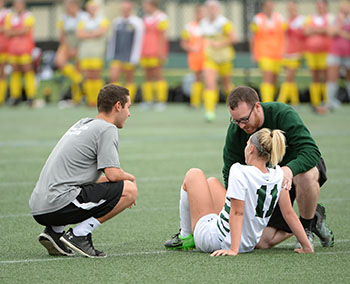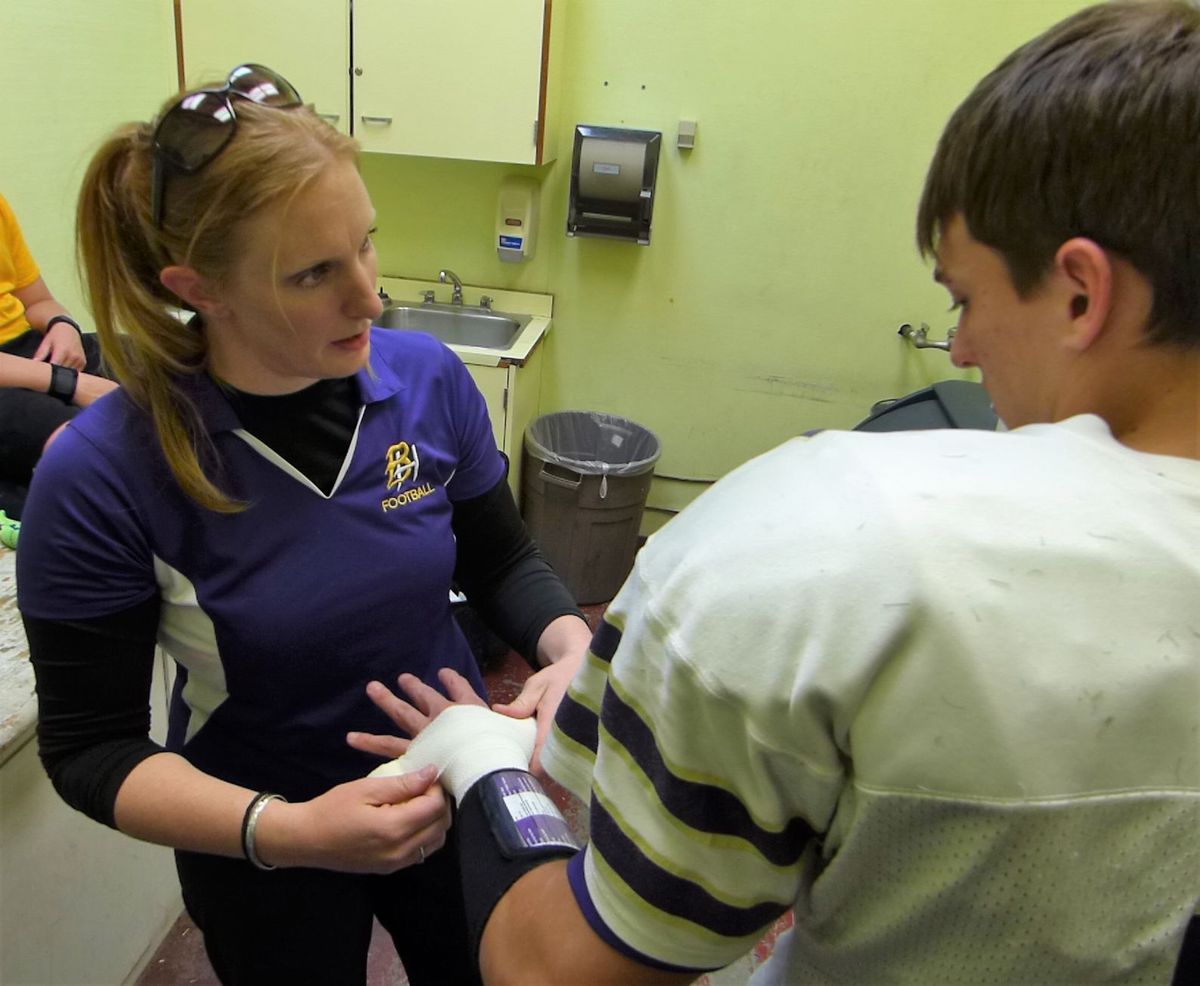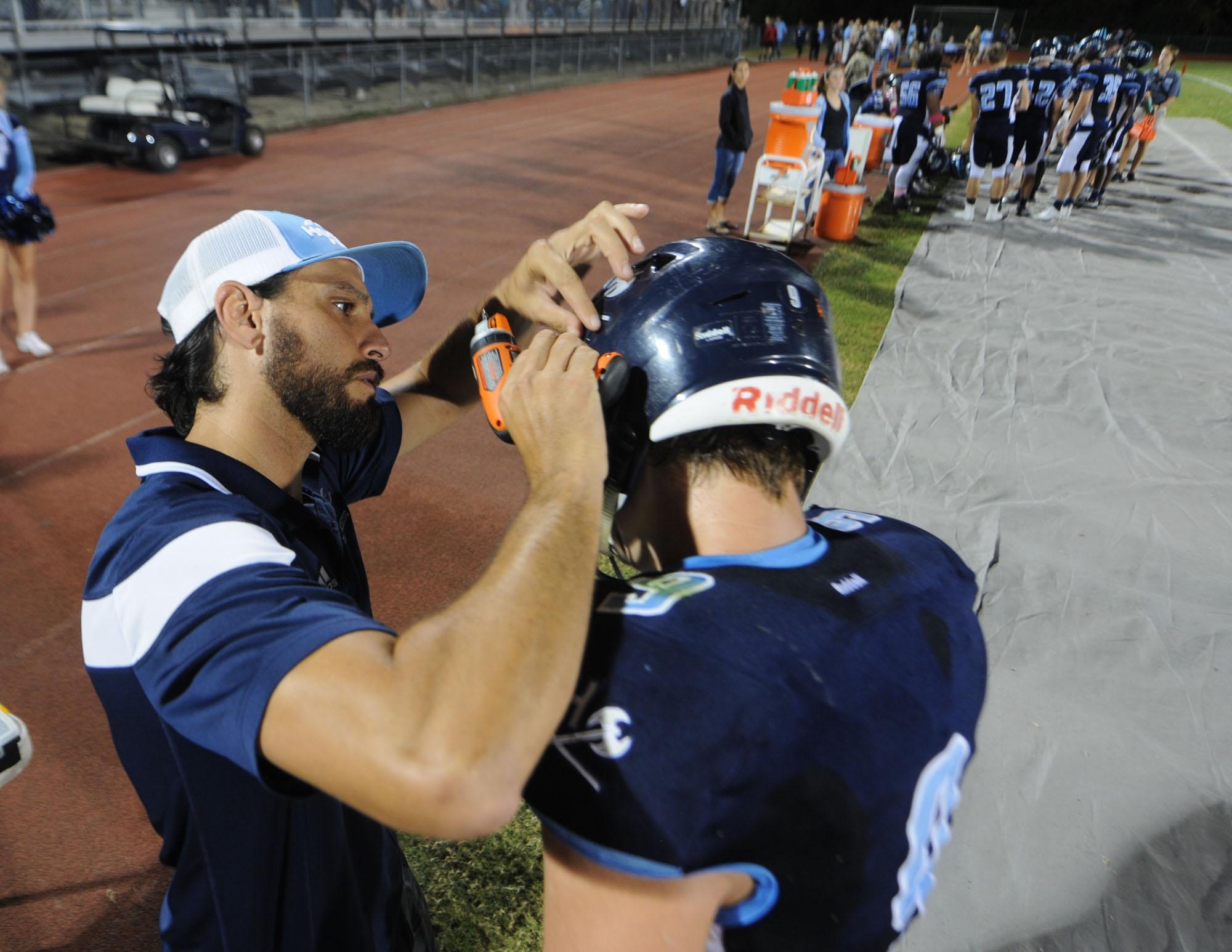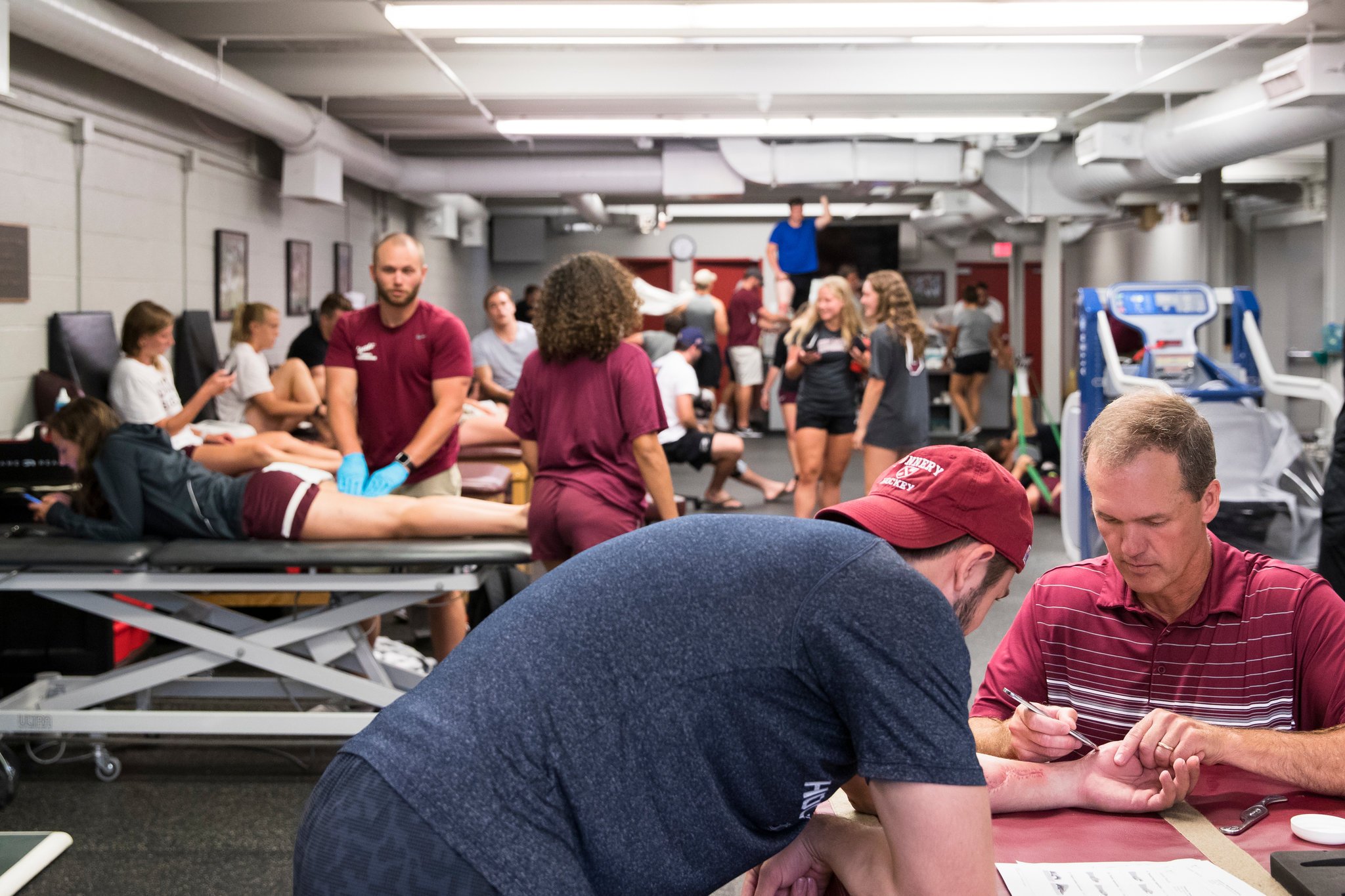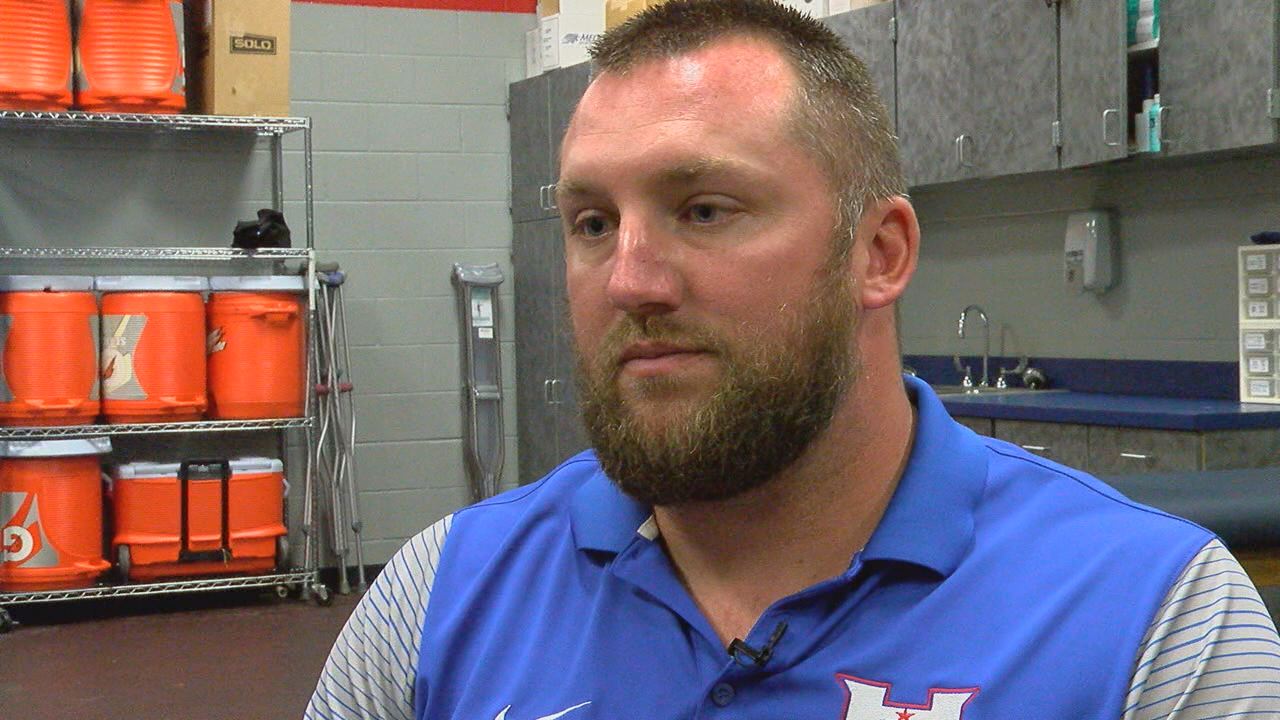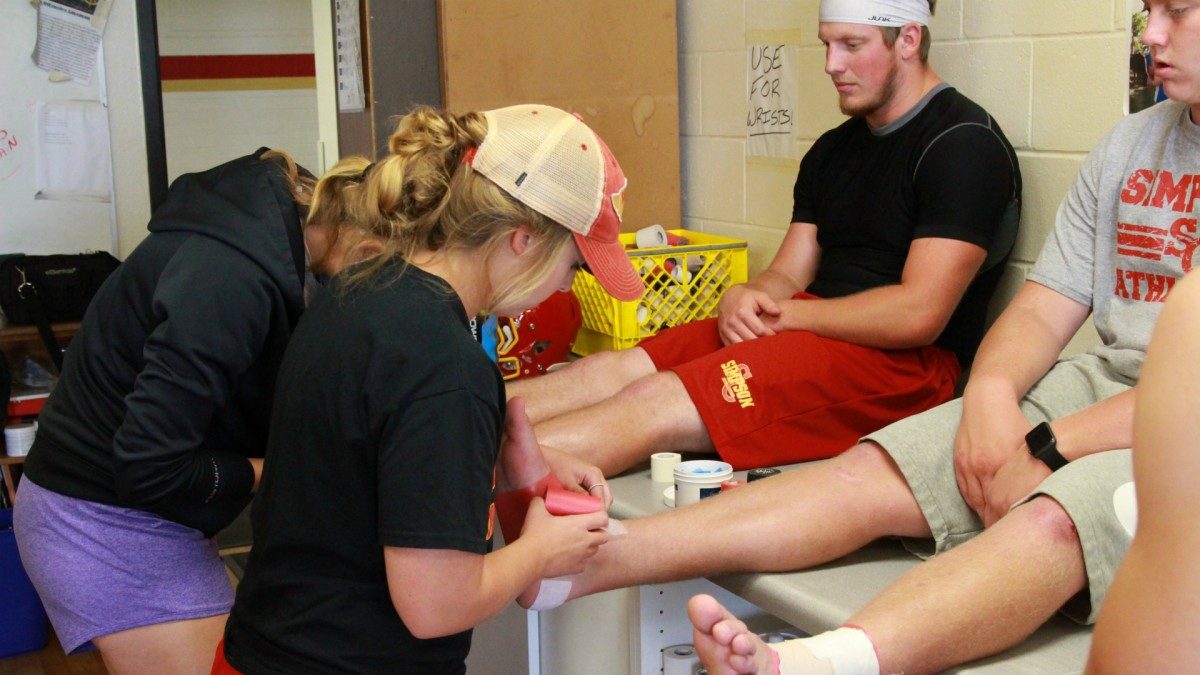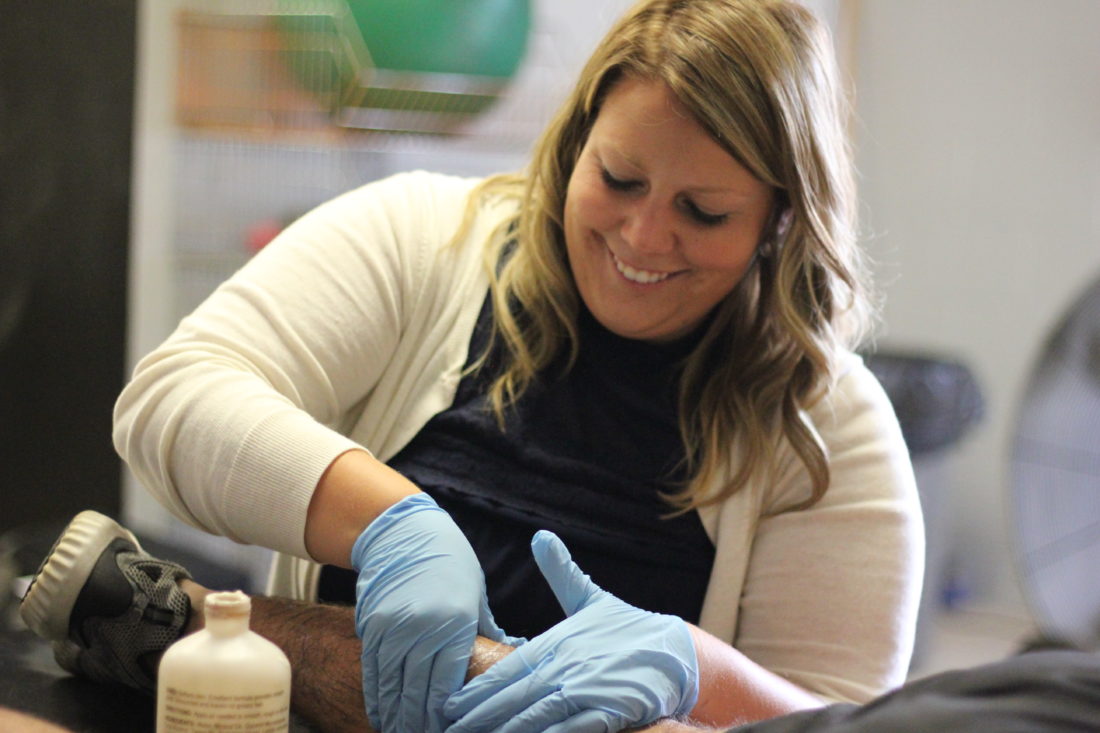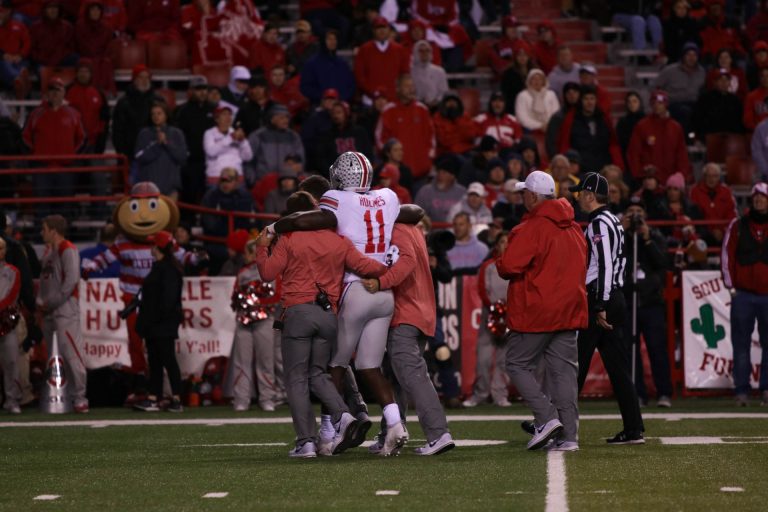
Article reposted from The Lantern
Author: Mitch Renner
Injuries go hand in hand with athletics.
Athletes in all sports have to constantly manage them, even if not recovering from injuries, taking the necessary steps to prevent injuries from taking place.
Therefore, in order to fully understand sports at Ohio State, it is important to consider the health of the athletes and the people in charge of ensuring an athlete’s safety. Athletic trainers are an ostensibly underappreciated yet critical component to the Ohio State Department of Athletics.
Currently, Ohio State staffs approximately 19 athletic trainers, eight interns and two physical therapists. There are also 10 team physicians, four sports medicine fellows, four nutritionists, several sports psychologists, a dentist and a pharmacist, all of whom collaborate with the athletic trainers.
Throughout each season for the sports, an athletic trainer will constantly need to be on site, whether it be at practice or during a game, to be there should something go wrong.
Katie Walker, an athletic trainer who specializes in tennis and women’s soccer, stressed just how different the experience is for every trainer based on the injury-risk of the sport.
“Soccer, obviously, is a higher-risk sport, from an acute contact injury standpoint,” Walker said. “So with soccer I’m really dialed into what’s going on in the play; people going up for headers, sliding into people.”
Walker added that keying in and evaluating an athlete’s current condition while simultaneously judging how an injury impacts the athlete’s play is a necessary skill for an athletic trainer. For example, tennis players would be assessed on their form and their swinging technique in order to see how an injury might be affecting performance.
In fact, the process of guiding an athlete through an injury is one of the primary responsibilities for any athletic trainer.
“Once you start to know your athletes and know their personalities and have treated them through so many injuries, it just becomes fun to watch people you know and to watch people who you helped get back on the court or back on the soccer field,” Walker said. “And that’s really where the enjoyment for athletic training comes from.”
Walker said there are multiple steps to addressing an injury during a game. The first action the protocol calls for is evaluating if the injury is major or is a high-risk type of injury.
If the injured player is physically capable of moving himself or herself to the sideline, the trainer will move the athlete to the sideline and further evaluate the injury with the available team physician. Treatment such as ice or taping then might be applied on the field to reduce recovery time.
After the game, more in-depth treatment like crutches or walking boots would be applied in the athletic training facilities. Documentation is the final step, as all athletic trainers must report any sort of injury into their computer medical database.
Preventing injuries is another key component to an athletic trainer’s arsenal. The term “prehab” is used among athletic trainers to describe preventing future injuries with players who are currently rehabbing.
Walker said prehab consists of working with strength and conditioning coaches to incorporate exercises that focus on building muscle in areas with high-risk injuries, such as ACLs and shoulders.
Athletic training also relies heavily on being updated with equipment and technology. Like any medical field, having the best techniques and technology allows for quicker recovery and eases an athletic trainer’s job.
Women’s soccer uses Polar Team Pro heart rate and GPS monitors in order to track cardiovascular and muscle stress. Another technology utilized is Omegawave, which is a system of electrodes that calculate changes in heart rate, which aids with recovery. Omegawave can also highlight any cardiovascular discrepancies that might impact an athlete’s ability to play.
Other techniques and equipment are vastly improving and the idea of unique improvements to the athletic training field is being constantly recognized every year.
The concept of athletic training is much more than simply concussion protocols and taping ankles. Although they might not be starring in any of the hype videos or postgame interviews, the athletic training staff are essential for keeping Ohio State’s athletes continually performing at high levels.
